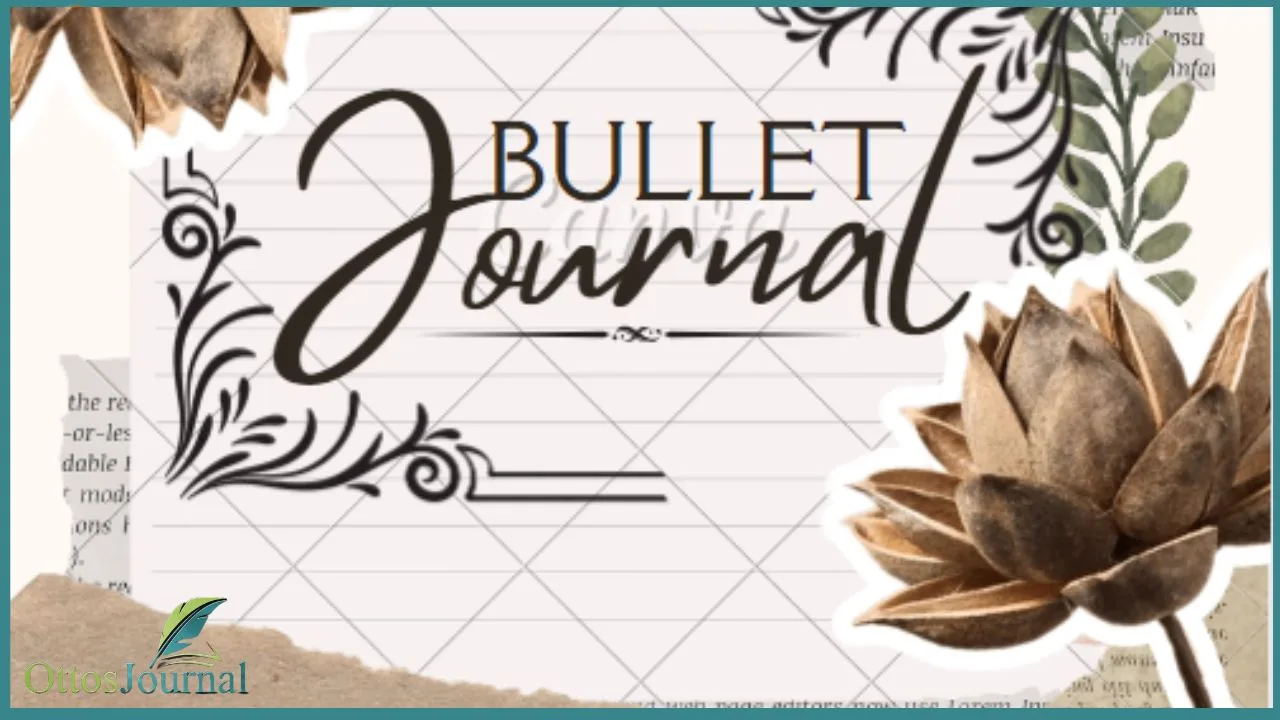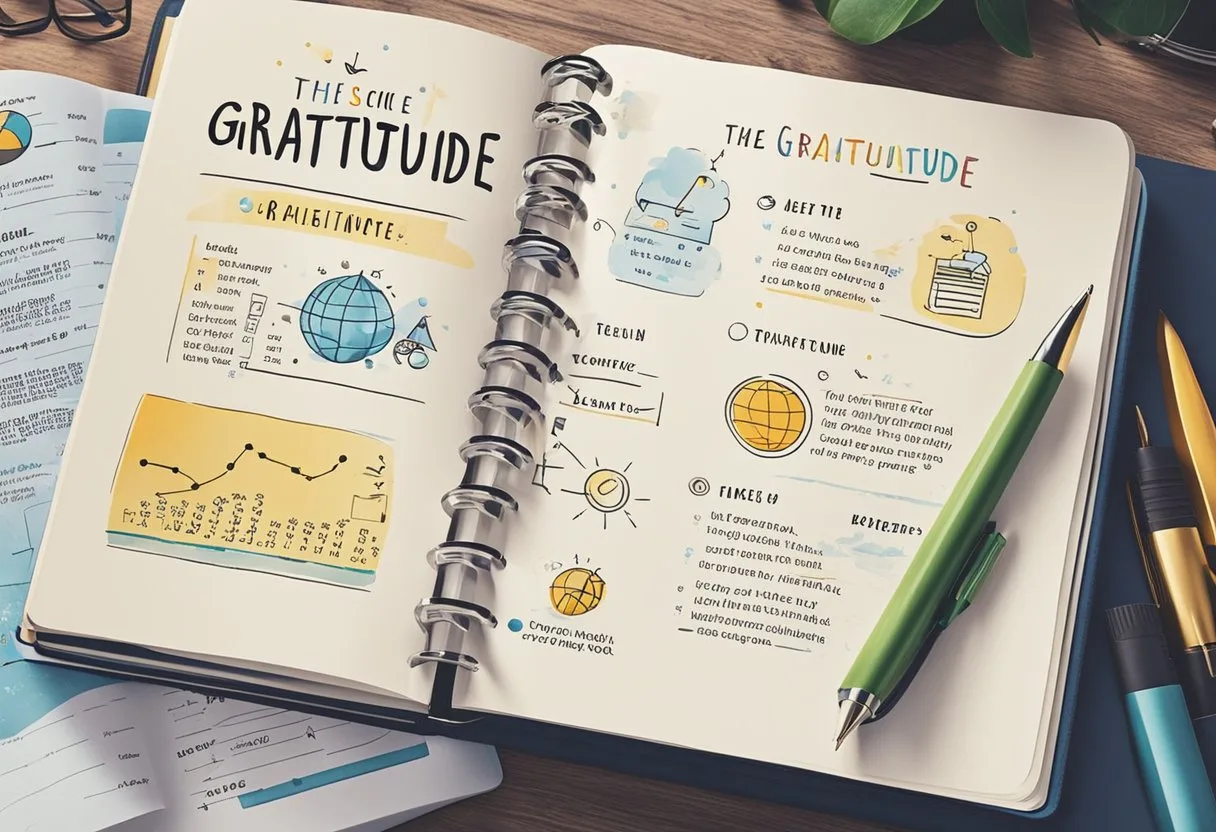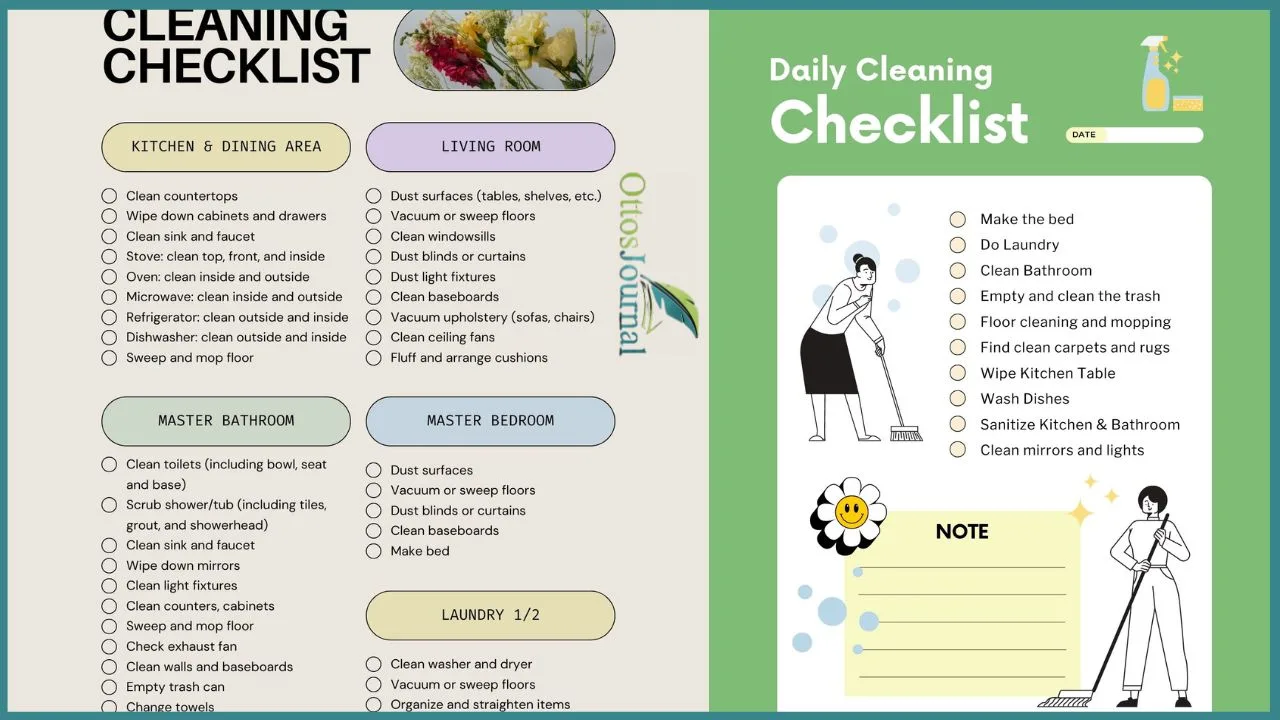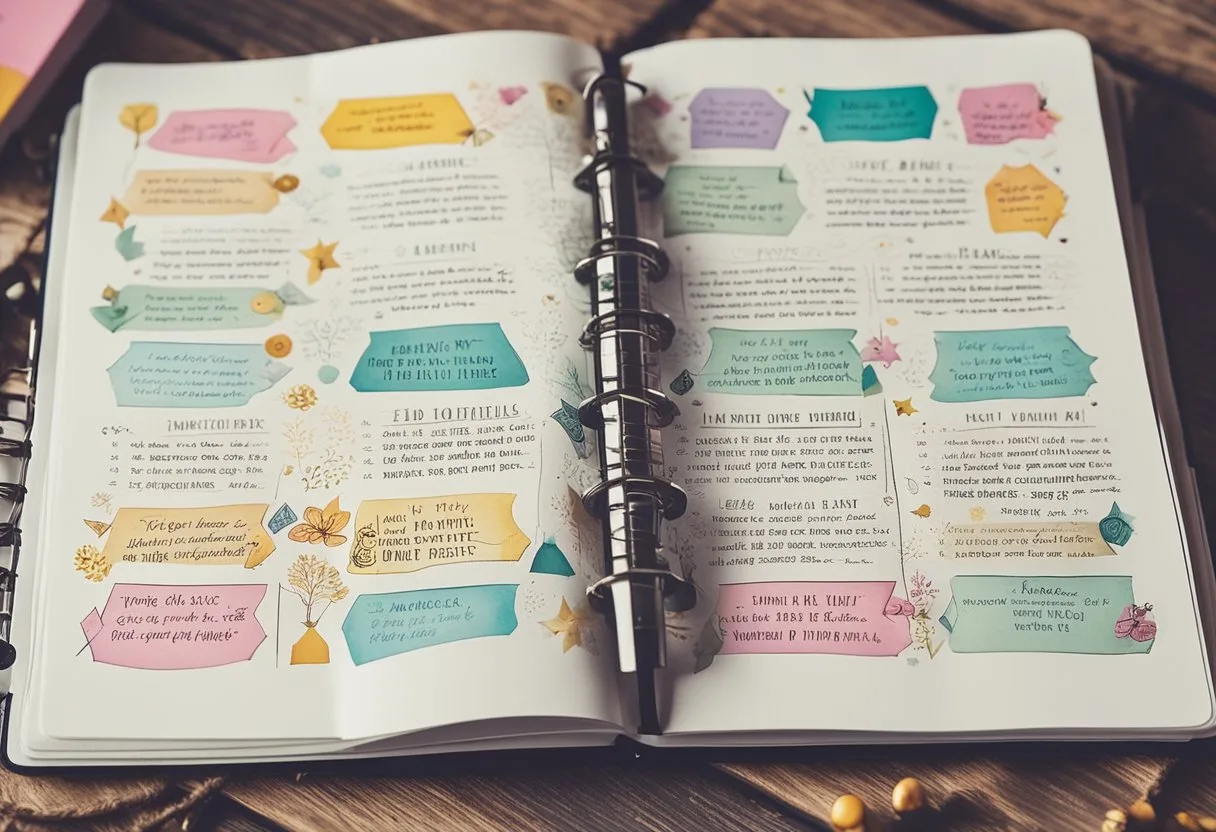If you are feeling overwhelmed, a bullet journal can help keep your emotions and energy in check. It provides an outlet to organize your thoughts and track progress for any goals or tasks. By writing down your worries, fears, and successes, you can gain clarity and relief from stress. Plus, setting aside even just five minutes each day to focus on yourself helps alleviate feelings of anxiety. In this article, I will show you how to start bullet journal for stress relief and provide you with ideas to get started.
How to Set up a Bullet Journal for Stress Relief?
Starting a bullet journal can be a great way to manage stress and promote well-being. It provides a creative outlet and helps you organize your thoughts, tasks, and goals in a structured manner. Here are some steps to start a bullet journal for stress relief:
Get a Notebook and Supplies:
Choose a notebook that suits your preferences, such as a dotted, grid, or a blank journal. You’ll also need pens, markers, highlighters, and any other art supplies you enjoy using.
Define Your Purpose:
Determine why you want to start a bullet journal for stress relief. It could be to track habits, plan your days, record gratitude, or express your creativity. Clarifying your purpose will guide your journaling process.
Create an Index:
Reserve a few pages at the beginning of your journal for an index. This is where you’ll log the content and page numbers of different sections or collections you create. It helps you quickly find information later.
Set Up Key Pages:
Start with basic pages that will form the foundation of your bullet journal. These may include a future log (for long-term planning), a monthly log (for important events and tasks), and a daily log (for day-to-day activities).
Customize Collections:
Collections are thematic pages designed for specific purposes. They can include habit trackers, mood trackers, gratitude lists, meal planners, goal trackers, and more. Tailor them to suit your needs and interests.
Incorporate Reflection and Mindfulness:
Dedicate pages or sections for reflection and mindfulness exercises. This could involve jotting down your thoughts, practicing gratitude, writing affirmations, or engaging in other self-care activities.
Use Symbols and Bullets:
Develop a set of symbols and bullets to help organize your entries. Common symbols include dots for tasks, circles for events, and dashes for notes. Customize them to match your style and make the journal visually appealing.
Experiment and Adapt:
Your bullet journal is a personal tool, so feel free to experiment with different layouts, styles, and techniques. Explore various art mediums, lettering styles, and decorative elements. Adapt your journal to suit your evolving needs and preferences.
Make It a Routine:
Set aside regular time to work on your bullet journal. It could be daily, weekly, or as needed. Treat it as a relaxing and mindful activity that allows you to unwind and relieve stress.
Begin with a Title Page
Start your journal off by creating a page that will be used as the title page for your new stress-relieving bullet journal. Include an inspirational quote, or create a beautiful design to set the tone for your journaling journey.
Make Room for Goals and Objectives
Write down any big goals you have in life, such as getting organized or creating more balance in relationships. By making these objectives clear, you can stay focused on what matters most when feeling overwhelmed or anxious about certain situations.
Schedule Reflection Time
Allocating time each day to reflect on how you’re feeling is essential for managing stress levels and improving mental health issues. Spend a few moments jotting down thoughts or concerns before you go to bed, or in the morning when you wake up.
Log Your Accomplishments
Celebrate your successes by writing them down! Give yourself credit for completing tasks and take time to appreciate how far you’ve come since starting your bullet journaling method. This is one of the most important steps for reducing stress and anxiety.
Track Habits & Routines
Keeping track of positive habits, such as exercise, reading, and meditation can be beneficial for managing stress levels. Writing these things down helps create accountability so that they become second nature over time.
Monitor Responses to Stressful Situations
Become aware of how you react to difficult situations by writing down your response. Include any coping mechanisms that you’ve used to help manage the situation and reflect on what worked or didn’t work. This will help you recognize how to best respond in similar situations in the future.
Create a Self-Care List
Make sure to prioritize yourself! Whether it be taking a long bath, going for a walk, or having a movie night with friends, write down activities that make you feel good and permit yourself to do them often.
Practice Gratitude
Writing down things that you are grateful for is one of the most powerful tools to relieve stress levels and increase overall happiness. When feeling overwhelmed, take some time to read through your list of gratitude quotes or accomplishments.
Monitor Your Progress
Reflect on how far you’ve come and celebrate your accomplishments by creating a page dedicated to tracking your progress. Writing down the small wins will help keep you motivated in the long run!
Tools and Tips for Bullet Journal for Stress Relief
Colorful Pens
Adding color to your pages will make it feel more inviting and encourage creativity.
Washi Tape
Use this decorative tape to add a fun element to any page that needs a bit of extra sparkle.
Stencils & Stickers
Create shapes, backgrounds, or calendars with stencils or stickers for an organized look.
Highlighters
Using highlighters can help draw attention to the most important parts of each page.
Ruler & Eraser
A ruler is useful for creating straight lines when writing or drawing boxes and borders. And an eraser can be used for quick corrections without having to start from scratch!
Index Cards
Use these to quickly jot down ideas or tasks that you want to come back to later.
Notebooks
Having a designated notebook for bullet journaling will help keep everything organized and easy to find.
Stress Relief Bullet Journaling Ideas
- Create a mental health tracker to document your emotions and identify patterns.
- Brain dump pages for writing down worries or fears without judgment.
- A vision board for manifesting positive intentions and dreams.
- Daily gratitude list to remind yourself of all the things you’re grateful for in life.
- Mood tracker page to reflect on how certain situations make you feel.
- Affirmation pages that will help build confidence and self-love.
- “Me Time” log that outlines time spent doing something just for you each day!
- Self-care routine full of activities that help boost energy levels and reduce stress.
- Motivational quotes page to inspire you on days when motivation is low.
- “Things I’ve Learned” section to document your growth over time.
- The weekly or monthly goal tracking page for staying focused on your objectives.
- Habit tracker to help form positive habits and break bad ones more easily.
- Mind map pages for brainstorming ideas and exploring creative solutions to problems.
- The worry tree encourages problem-solving instead of ruminating on worries and anxieties.
- Mood board with images, visuals, and words that evoke a sense of calmness and peace in times of distress.
- A sleep log to track the quality and quantity of restful nights.
- A “Rewards” page with things to look forward to as you progress through your goals.
- Breathing exercise tracker for mastering mindful breathing techniques.
- Fears list for making fears more manageable by dividing them into smaller pieces.
- An “Accomplishments” section that reminds you of all the amazing things you’ve achieved in life thus far!
How to Organize Stress Relief Bullet Journals
Establish a Dedicated Space
This is a great way to stay organized and ensure that you have all the supplies you need in one spot.
Set Up Categories
Create categories for your journal, such as “mindset,” “goals & objectives,” and “self-care.” You can also create pages with monthly or weekly themes like “reflection” or “gratitude” if desired.
Make an Index Page
An index page helps you find important information quickly and easily.
Divide Pages Into Sections
Dividing pages into sections will help keep all of your ideas together without getting overwhelmed by too much information on one page.
Utilize Color
Using color to your advantage can make your journal look more inviting and organized.
Create Logs & Charts
Creating logs and charts is a great way to keep track of tasks, habits, routines, etc. efficiently.
Label Pockets or Folders
If you’re using a special notebook with pockets or folders for extra storage, be sure to label them clearly so that you know what’s inside each one. This will help ensure that everything is correctly filed away and easily accessible when needed.
Tips to Make the Most Out of Your Stress Relief Bullet Journal
Get creative
Incorporate things like doodles, drawings, or even collages to make the journal more personal and enjoyable.
Choose your layout
Depending on what you want out of the journal, decide how you want to organize it, through pages, topics etc.
Be kind to yourself
Don’t be overly critical of yourself, use positive language while gratitude journaling and remain mindful of how you are feeling.
Find solutions
Look for solutions to any problems that you encounter, and make a plan of action on how to work through them.
Be honest
Write down your true thoughts and feelings in your mental health bullet journal without fear of judgment, whether they are positive or negative.
Bottom Line
Bullet journaling for stress relief can help organize your thoughts and feelings, set goals and track progress, express without fear of judgment, write self-care ideas, and become more mindful of yourself.
Through this type of creative journaling, you can gain clarity on difficult emotions while fostering positive thinking.
With just a few minutes each day, you can make significant strides towards better mental health, which in turn improves your physical health.
These tips and prompts can help you get started on setting up your bullet journal for stress relief, start today and begin your journey towards a healthier, happier life!





